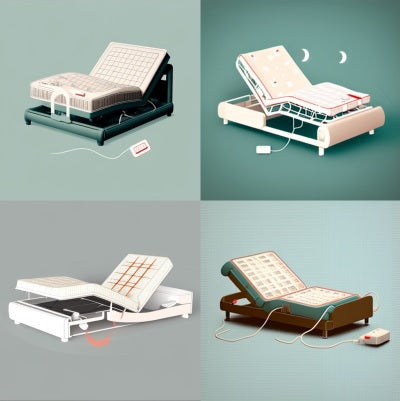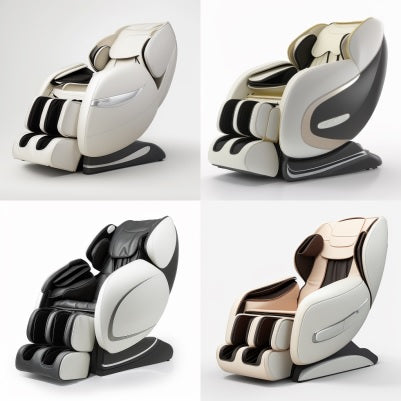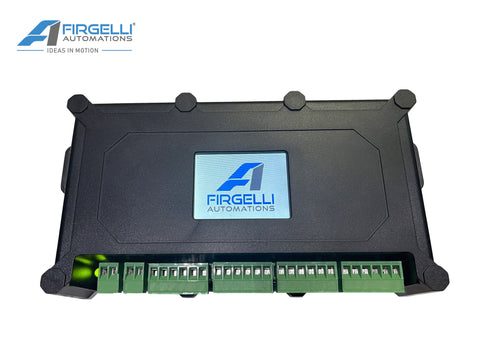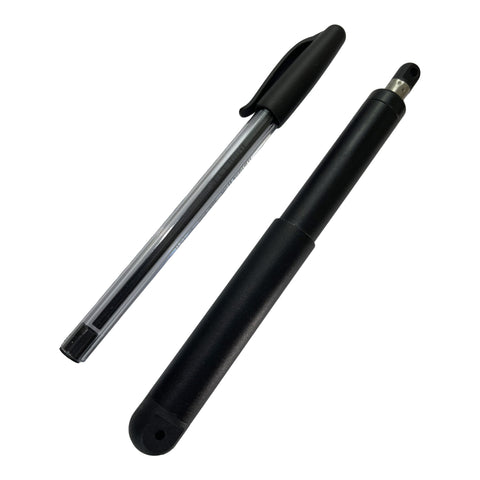Modern furniture design is no longer just a form of aesthetic enhancement to living spaces; it's evolving into a realm where functionality, comfort, and interactivity merge to create innovative user experiences. At the heart of this transformation lies actuators – silent yet powerful devices that are revolutionizing the way furniture moves and adapts to its occupants. Actuators are now a cornerstone in the design and production of furniture that offers mobility, automation, and adaptability, catering to a vast array of needs and preferences.
In this extensive exploration, we’ll delve into the various applications of actuators in modern furniture. From adjustable pieces that promote ergonomic living to smart furniture that intelligently interacts with users, we will shine a light on the potential of actuators in furniture design.
Actuators in Adjustable Furniture
Adjustable furniture is a boon for those who value versatility in their living space. Whether it’s to alleviate back strain with a perfectly angled recliner or standing up from one’s bed with the touch of a button, actuators make these movements intuitive and effortless.

Gone are the days of manual levers—today’s recliners employ quiet actuators that tilt the seat back, raise the footrest, or elevate the entire chair to an almost-standing position. This subtle interaction with furniture enhances not just comfort but the overall user experience, making relaxation a truly pleasurable and adjustable affair.
Whisper-Quiet Actuators in Adjustable Beds
The tranquility of sleep should not be disturbed by the noise of bed adjustment. That's where the latest actuators shine, integrating silently into the framework of adjustable beds. These actuators allow for precision adjustments, ensuring that users find their perfect sleep position without any disruptive noise.

Standing Desks and the Movement Revolution
Standing desks have become an essential part of the ergonomic workplace. Their rise-and-fall functionality, driven by actuators, promotes better circulation and reduces sedentary pressures on the body. Employees can effortlessly move from a sitting to a standing position, adapting their working styles to stay productive and healthy.

Actuators in Smart Furniture
The concept of home automation is seeping into our furniture, with actuators being the driving force behind its evolution. Smart sofas that adjust to your lounge preference, tables incorporating hidden compartments that reveal themselves with a whisper, and cabinets that slide open at the touch of a button—all thanks to actuators.
Automated Recliners and Sofas
With actuators, today's recliners and sofas learn user behavior, adjusting seating and reclining positions based on comfort zones pre-set by the individual. These smart recliners are elevating the concept of lounging, offering personalization in a way that was once simply unimaginable.
Tables That Expand Your Space with a Whisper
Actuators play a pivotal role in the expansion of tables, making them perfect for those who love to entertain but are also mindful of space limitations. The ease and quietness with which a table extends itself to accommodate guests is a testament to the engineering marvel that actuators bring to the modern living room.
Functional Cabinets and Storage Solutions
Hidden compartments and sliding doors in cabinets are brought to life with actuators, turning otherwise static storage solutions into pieces of interactive décor. Smart cabinets that reveal their contents or transform their shape add a touch of innovation to any room, adapting to the needs of the hour without any fuss.
Types of Linear Actuators and Their Applications
Understanding the different types of linear actuators and where they fit best in furniture applications is integral to achieving the desired functionality and user experience.
Low-Force Actuators for Fine Adjustments
In adjustable furniture like sofas and tables, low-force linear actuators are ideal for making micro-adjustments. From positioning a reading light to the perfect angle to ensuring the smooth folding of an ottoman, these actuators work with precision and finesse.
Medium-Force Actuators for Enhanced Support
Medium-force actuators find their home in furniture designed to offer support during tasks. These can be found in chairs that adjust lumbar support, and in recliners that help individuals with back issues find a comfortable position that eases tension and stress.
High-Force Actuators for Heavy Lifting
For furniture that requires heavy lifting capabilities, high-force actuators like the FIRGELLI Super Duty Linear Actuator come to the rescue. Lift mechanisms in functional sofa beds and cabinets benefit from the sheer force these actuators provide, ensuring smooth and reliable operation even under significant weight.
Control and Synchronization Options
Controlling actuators can be as simple as a rocker switch or as sophisticated as a Bluetooth-equipped smart device. For intricate movements where multiple actuators need to synchronize, controllers like the FIRGELLI FC-1 ensure that every part of the furniture moves in harmony, creating an optimal user experience.
Actuators are also instrumental in the realm of space-saving furniture, ensuring that living in a compact area need not mean compromising on style or functionality.
The Ingenious Mechanisms of Folding Beds
Foldaway beds that effortlessly tuck into a wall or hidden within a cabinet are made possible by actuators. These hidden heroes in space-saving furniture allow for beds to be stowed away during the day, creating a living room that is spacious and uncluttered.
Expandable Tables: Innovation in Flexibility
Actuators enable expandable tables to seamlessly grow or shrink in size, making them perfect for dining rooms that cater to varying numbers of guests. The intuitive movement of these tables brings a sense of adaptability that is well-suited for the bustling city dweller's lifestyle.
Modular Furniture: Flexibility Redefined
The flexibility of modular furniture, such as sectionals that can transform into different configurations, is enhanced by actuators. Firmly locked together for sitting and discreetly separated for individual lounging spaces, these furniture pieces adapt to the ever-changing needs of a dynamic household.
Actuators in Customizable Furniture
Customization in furniture design is a growing trend, and actuators play a significant role in making personalized choices functional.
Configurable Chairs for Personal Comfort
Actuators in configurable chairs give users the power to adjust seat height or back angle, according to personal preferences. Customizable features in these chairs ensure that they offer the perfect support, whether you're working at your computer or enjoying an evening of relaxation.
Modular Sofas for the Creative Homeowner
Actuators enable sections of a modular sofa to be reconfigured, introducing versatility and creativity to living spaces. The ability to transform a sofa from a cozy loveseat into a spacious sectional with just a few clicks engages the user in the design, making the furniture an ever-evolving statement piece.
Adaptable Workstations for the Home Office
Home offices that double as a guest room need furniture that can adapt accordingly. Desks and shelving units that move up or down with the help of actuators ensure that the room seamlessly transforms from a productive workspace to a comfortable guest accommodation.

Actuators in Assistive Furniture
The integration of actuators in assistive furniture points towards a future where accessibility and convenience are not merely buzzwords but key elements of thoughtful design.
Lift Chairs for Gentle Assistance
Actuators in lift chairs provide the gentlest form of assistance to those with mobility issues. By gradually tilting the chair forward and helping the user stand, lift chairs offer independence and comfort, redefining the concept of supportive furniture.
Adjustable Beds for the Elderly and Disabled
The adjustability offered by actuators in beds extends the pleasure of independence to choosing one’s sleeping position for individuals with limited mobility. Comfort is no longer a luxury but a vital aspect of daily living, readily available with the push of a button.
Mechanisms Designed for Sensitivity
Furniture for individuals with special needs requires sensitivity in their design. Actuators used in such applications are engineered to respond with the perfect blend of firmness and gentleness, ensuring that user interaction is safe and comfortable.
Conclusion: Actuators as the Future of Functional Design
The examples mentioned are just a glimpse of the potential actuators hold in transforming the world of modern furniture. Their ability to enhance ergonomic support, offer customizable solutions, and improve accessibility can't be understated. As designers continue to push the boundaries, we can expect to see even more innovative applications of actuators in furniture, ultimately blurring the line between art and engineering.
Furniture designers, mechanical engineers, and DIY enthusiasts are at the forefront of this revolution, crafting personalized and functional pieces that reflect the changing needs of our society. With actuators as their arsenal, the possibilities are limitless. The future of furniture design is here, and it moves with the precision and grace of an actuator.




